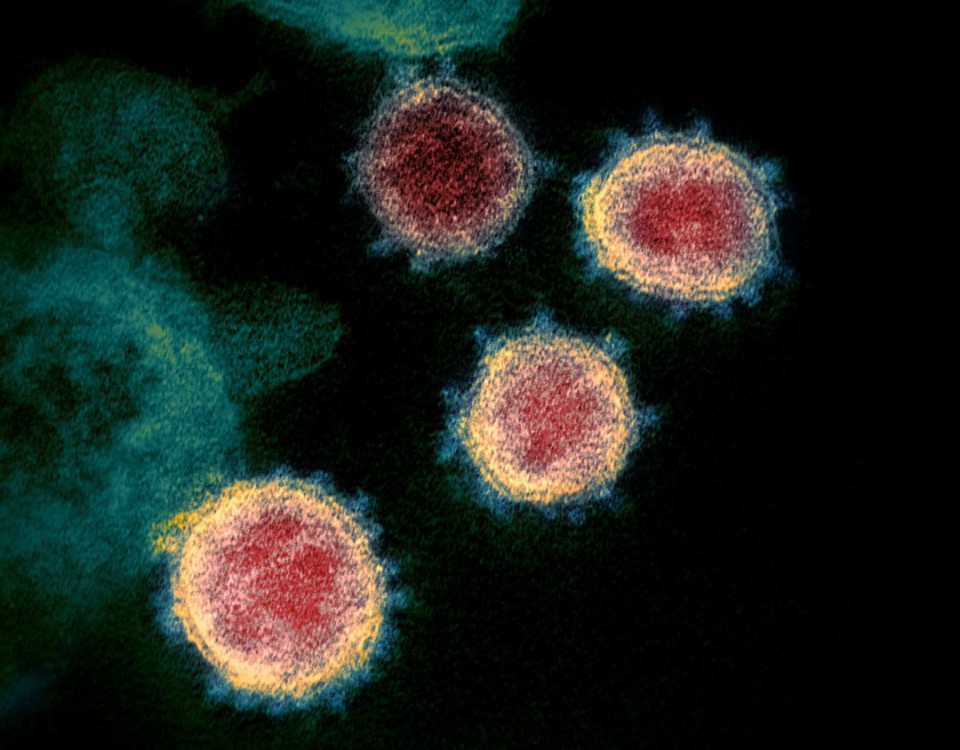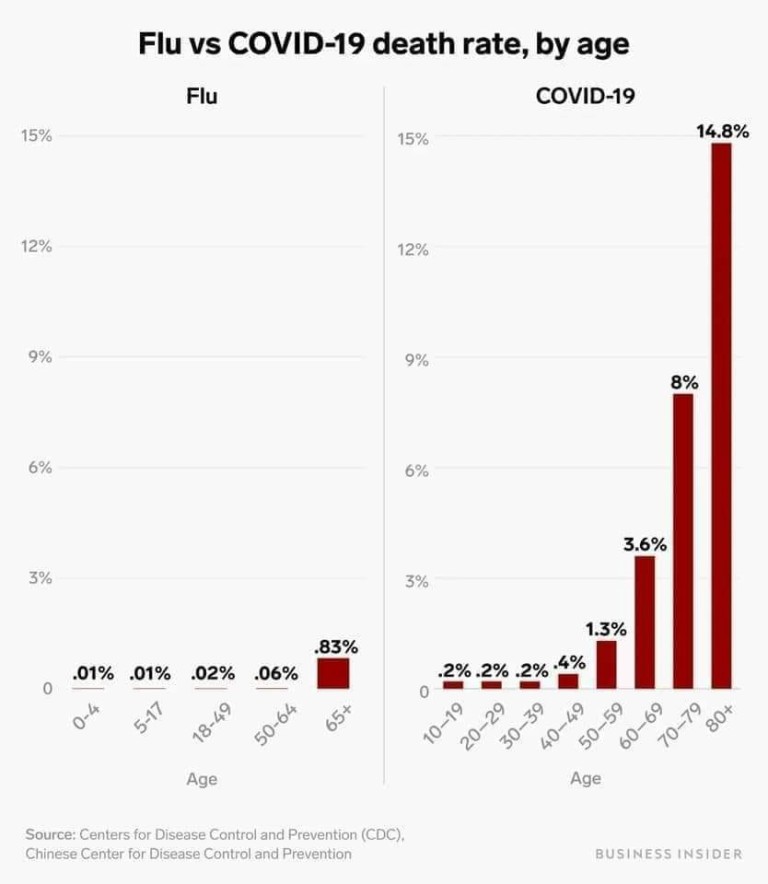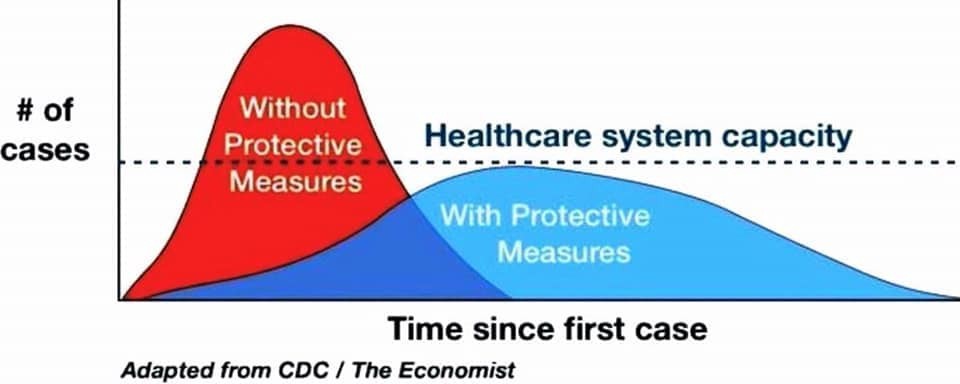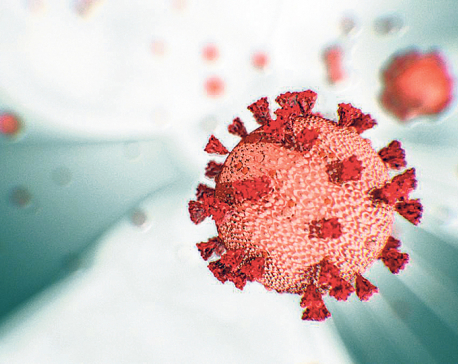
OR
Why We Should Care: Common Questions and Answers about Covid-19
Published On: March 9, 2020 03:30 PM NPT By: Agencies

I'm Dave Troy, an expert on online disinformation, misinformation, and mathematics relevant to disease transmission. Recently I’ve been answering a lot of common questions about Covid-19 on social media, trying to dispel misconceptions and falsehoods. I’ve compiled a list of the most common responses, with the hope that this makes this information more easily accessible to others. Note: I am not a public health or medical professional, however, I have taken extra care to square all my responses here with official guidance and medical advice.
Q: Why are people freaking out about this more than flu?
A: Each person infected with seasonal influenza may infect approximately 1.3 other people. For SARS-CoV-2 (the virus that causes Covid-19), it is estimated to infect about three times as many people (estimated at 2 to 4). This number is called the reproductive factor, or “R0,” and you may see it referred to that way. This will lead to many, many more cases very quickly, and may overwhelm an already burdened medical system.
Q: Why should I even care if I get it? It doesn’t seem that lethal.
A: It’s true that for healthy people under age 50, it’s not especially lethal — the mortality rate is quite low, but still up to 20 times higher than flu. But it becomes more lethal for older patients. The following chart gives good estimates for mortality rate by age bracket compared to the flu. The WHO estimates an average mortality rate of 3.4%, which is around 100 times higher than flu, but do note that average is across age brackets. And while you may not die, you may give it to others, which will overwhelm our healthcare system.

Q: If I’m likely to get it, why not just get on with it? I don’t want to change my routines just for this, and it doesn’t seem that dangerous.
A: Don’t be the person that takes up medical resources that someone else needs more than you do. This is our ethical North Star with this disease. The goal should be to minimize spread so that as health resources (from diagnostics to treatments, to ventilators and oxygen concentrators) are needed, they are available to people who need them most. Share this graphic on people’s social media pages; it explains exactly why this is important. See this story for how the health care system may be overwhelmed. If we can slow down the spread, we have more time to react and make preparations. A slower spread will save many lives because an overwhelmed healthcare system will not be able to provide care to all who need it. Health experts call this “flattening the curve,” and it’s perhaps our best and only strategy for mitigating this situation.

Q: Aren’t other diseases like SARS, MERS, or H1N1 more lethal? Why freak out about this one?
A: The issue isn’t the lethality as much as the overall impact of the outbreak. While these other diseases may be more lethal, the combination of reproductive factor (R0), receptivity in the population (susceptibility), and immunity may make them much more manageable. SARS-CoV-2 (the virus that causes Covid-19) is totally novel to the population, so no one is immune. Each year, people are already immune to the flu because of exposure to prior variants, or because of annual vaccination. There is no vaccine available for SARS-CoV-2 yet. We should expect it will be at least Q1 2021 before a tested vaccine is widely available. In the meantime, everyone is likely vulnerable, so we should expect that an extremely large number of people will be infected. (See this Atlantic article.)
Q: How many people will be infected? Is this really a big deal?
A: Yes, it is a really big deal. Because there are no real barriers to spread and the reproductive factor (R0) is so high, it is possible and indeed likely that 20–70% (source) of the global population will be infected. That is 1.5 billion to 5 billion people. With an estimated mortality rate of about 2% (source), that is 30 to 100 million deaths, globally. In the US we might expect that 66 million to 231 million people may be infected, with as many as 1.2 to 4.6 million dead, possibly more. That may well also be an overestimate; we don’t know a “true” mortality rate yet, but the WHO estimates it may be as high as 3.4%. But the mortality rate isn’t as important as the fact that the medical system will be overwhelmed, because this will all happen really fast. And yes, many people will die. We just don’t know how many yet.
Q: How quickly will it spread?
A: We don’t know, but the rate of doubling of known cases seems to be every few days. That means that without major interventions, this infection will reach much of the world’s population in a matter of weeks or a few months. This could be as many as 1.5 to 5 billion people, as mentioned above. We don’t know how the virus responds to ambient air temperature or humidity (see next question.) See this dashboard to observe the growth in your country—with the caveat that reported numbers are likely undercounting actual cases (see this article).
Q: Won’t this calm down in the summer, with warmer temperatures, like normal flu?
A: We don’t know yet; it’s just a theory. This disease has a high reproductive factor (R0), a high prodromal (asymptomatic) period of about 14 days, and it’s not the same as flu. Warmer countries like Singapore have cases right now; we are watching developments in other warm countries that have cases also. And people may be carriers without showing symptoms. So it may persist into the summer and warmer temperatures, while also shifting its prevalence into the Southern Hemisphere where it is cooler. In the fall, it may return to resume where it left off and continue infecting people if there are people left to infect — or re-infect people if somehow re-infection is possible. Do not expect this to be over by September.
Q: When will a vaccine be available? Can’t we just stop this thing?
A: Vaccines are under development, but getting a workable, tested vaccine out to the market will take time. While some teams claim to have vaccines now (March 2020), it will take some time to refine, test, manufacture, market, and deliver these solutions. Producing enough vaccines for billions of people will not be a small task and will take time, capital, and coordination with governments. Estimates suggest the soonest any vaccines will be available is Q1 of 2021.
Q: How should I protect myself? Should I stock up on hand sanitizer?
A: Your best defense is frequent hand-washing with soap and water, and not touching your face, nose, eyes, and other mucous organs. While hand sanitizers with high levels of alcohol work, soap and water are extremely effective and should be your first choice. Soap molecules have a fatty end that attaches to and penetrates the lipid shell of the virus, and a hydrophilic (water-loving) end that water attaches to and rinses away the soap with the virus. Hand sanitizer may render the virus impotent but leaves it on your hands. Wash hands frequently. Keep your distance from other people and try to avoid unnecessary travel and social gatherings. Here are some CDC recommendations. If you’re somewhere you don’t have ready access to soap and water, go to someplace where you do and stay there.
Q: China and Korea proved this can be slowed and stopped. Can’t we just do what they did?
A: Both the Chinese and Korean governments took extremely decisive actions to minimize the spread of this disease. The Chinese government is an authoritarian regime that could unilaterally impose and enforce a lockdown of several weeks. Governments in the US and Europe will have a harder time doing this, but we will likely see increasing momentum around school closings, event cancellations, movement restrictions, and other social distancing measures. Italy just enacted a lockdown of about 16 million people for a month. Nicholas Christakis, an expert on the 1918 flu, suggests that the sooner we do this, the more lives will be spared.
Q: When will things be back to “normal?”
A: We don’t know. Expect March, April, May, and June 2020 to be heavily disrupted. Beyond that, we may see a reprieve in parts of the world with warmer weather (see above). But given that it will take until 2021 to have a workable vaccine at scale, we should expect at least some disruptions until around that time. We should be able to make better estimations with each passing month. But don’t expect that things will get back to normal on any predictable timeline.
Q: Panic seems worse than the disease itself. Should we really be worried about this? Why is there so much fear?
A: Yes! Panic, worry, and fear are totally unhelpful. Instead, we should be realistic and prepared, and we should have a rational framework for thinking about our response to this, with full transparency from the government. While we may be falling short of this standard, we can certainly calm down and understand the mathematics behind this, and take reasonable actions to minimize the risk to our populations. Making sure to have 2–3 weeks of food and necessary medicines on hand is great preparation. Avoid hoarding supplies, especially things like breathing masks, which are only helpful if you are in at-risk situations. Hopefully, this list of questions and answers helps put things in proper perspective.
Q: Why are conferences being cancelled? Shouldn’t I just go to a conference I am scheduled to attend?
A: The CDC has suggested that social distancing measures and limiting non-essential travel can help slow the spread of the disease. Many conference organizers are also facing pushback from attendees, sponsors, and contractors about attending or working events. In some cases, local governments are forcing the cancellation of large events. For this reason, many organizers are deciding to postpone events to a later date, or put things on hiatus while this situation is addressed. In general, you should consider that minimizing your exposure to large groups is the most socially responsible thing to do. And if you must travel, you may consider driving vs. flying or taking a train.
I will continue to update this document to make sure it’s up-to-date and accurate. There are many resources such as CDC and WHO where you can get more comprehensive and scientifically detailed answers than these — I am not a medical expert, just someone good at reading, math, and basic reasoning. These are the most frequently asked questions I have been answering and learning from others about on social media, and I think it’s important we get these answers out there in a conversational way. Feel free to copy or accurately paraphrase my text, or link to this article (preferable). And again, discourage panic and encourage preparation. Together we can get through this. Please feel free to leave a comment here or contact me via email if you see any material errors. Thanks.
You May Like This

Displaced families in acute shortage of food
KANCHANPUR, April 18:The families displaced by the Shuklaphanta National Park are facing acute shortage of food stuffs due to ongoing... Read More...

Fourth Nepali dies of coronavirus in US
UNITED STATES, April 16: Pawan Kumar Malla, former assistant sub-inspector of Nepal Police, died of the coronavirus in New York... Read More...

Coming two weeks are challenging, please stay at home: PM Oli
KATHMANDU, April 8: Indicating the extension of the lockdown until the third week of April, Prime Minister K P Oli... Read More...





Just In
- Kushal Dixit selected for London Marathon
- Nepal faces Hong Kong today for ACC Emerging Teams Asia Cup
- 286 new industries registered in Nepal in first nine months of current FY, attracting Rs 165 billion investment
- UML's National Convention Representatives Council meeting today
- Gandaki Province CM assigns ministerial portfolios to Hari Bahadur Chuman and Deepak Manange
- 352 climbers obtain permits to ascend Mount Everest this season
- 16 candidates shortlisted for CEO position at Nepal Tourism Board
- WB to take financial management lead for proposed Upper Arun Project






_20220508065243.jpg)







Leave A Comment